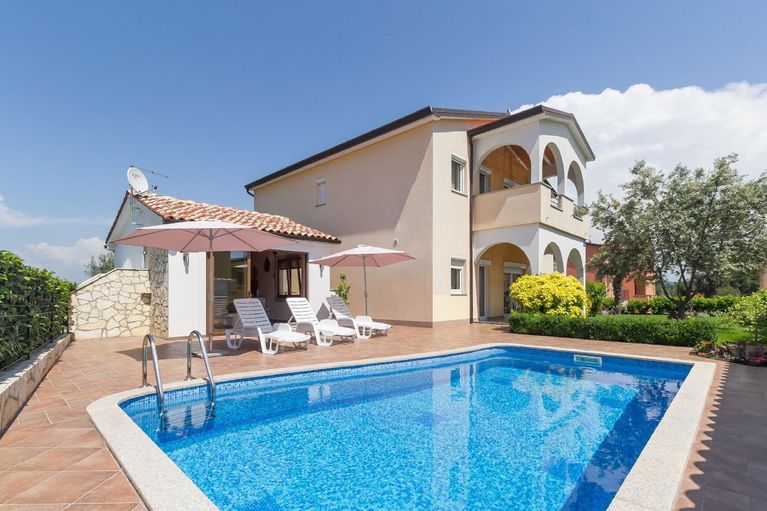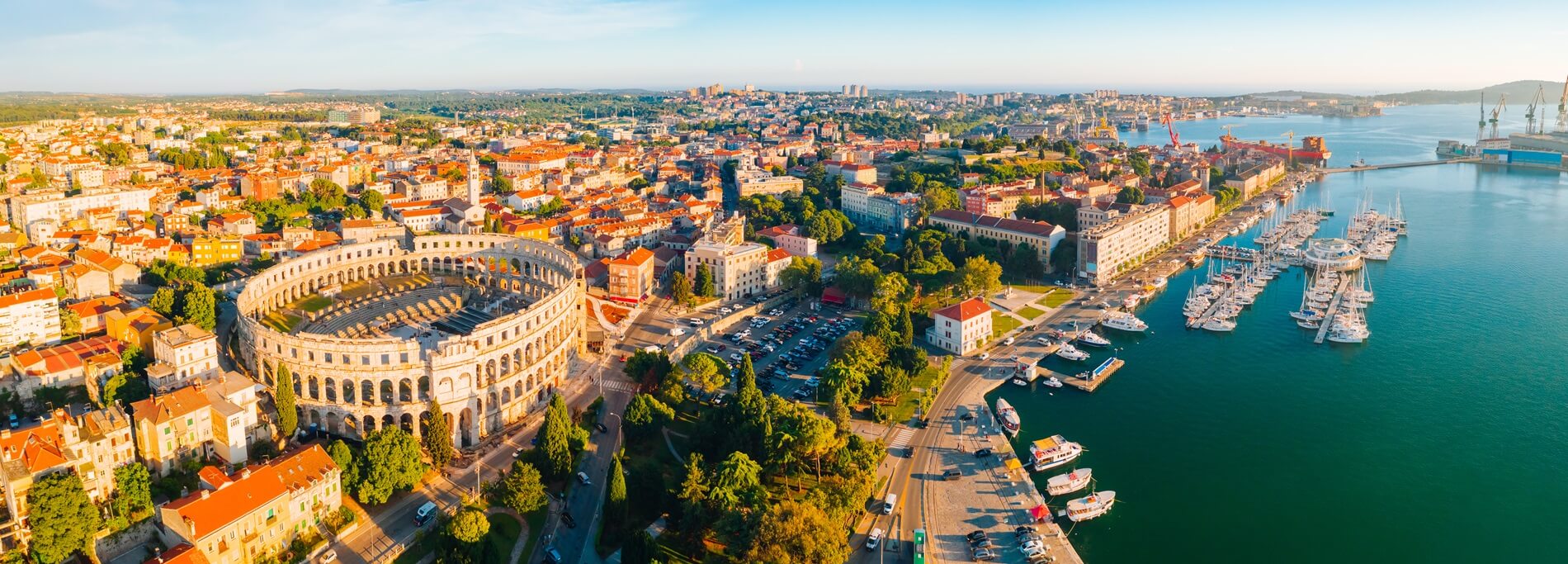
Pula, a coastal town in the Istria region of Croatia, is a fascinating place full of history and culture. Boasting a long and rich past, this city was once an important site in the Roman Empire and has developed into a major tourist destination over the centuries.
The old town of Pula, with its winding streets and historic buildings, attracts numerous visitors every year who want to admire the unique mix of ancient ruins, medieval structures and Venetian palaces.
Pula’s Old Town is a real gem and offers a variety of attractions that reflect the city’s rich history and cultural heritage. Visitors can discover the remains of Roman architecture, charming squares and lively markets.
This mix of historical and modern elements makes Pula’s Old Town a must-see destination for anyone visiting Croatia.

The amphitheatre of the old town of Pula, also known as the Pula Arena, is undoubtedly the city’s most famous landmark. This impressive structure dates back to the 1st century AD, during the reign of Emperor Vespasian, who also built the famous Colosseum in Rome. It is the sixth largest surviving Roman amphitheatre in the world and could once hold up to 26,000 spectators.
In ancient times, the amphitheater served as a venue for gladiator fights, animal hunts and even re-enactments of sea battles. These spectacular shows attracted people from far and wide to admire the architectural masterpiece and be entertained by the exciting fights.
Today, the amphitheater has found a new role and is an important venue for cultural events. Especially in summer, the arena is used for concerts, theater performances and the famous Pula Film Festival, which is one of the oldest film festivals in the world. The breathtaking scenery and excellent acoustics make events in the arena an unforgettable experience.
The Pula amphitheater offers visitors numerous opportunities to experience history first hand. The arena can be viewed both from the inside and the outside. It is advisable to visit early in the morning or late in the afternoon to avoid the large crowds and to take advantage of the best light for photos.
A tour through the catacombs, where gladiators and wild animals once waited for their turn, also offers interesting insights into Roman history and the architecture of the time.
The Pula Forum was the main central square of the city and served as a social and political hub. Over 2,000 years ago it was a lively centre of urban life, where markets and political meetings were held. Today the Forum continues to be an important meeting place in the old town of Pula, surrounded by historic buildings that reflect the city’s rich history.
A highlight of the Forum is the Temple of Augustus, dedicated to the Roman Emperor Augustus. Built in the 1st century BC, this impressive temple is one of the few fully preserved buildings in the Forum.
The temple is 14 metres high and impresses with its classical Roman architecture. Inside the temple there is a small collection of ancient bronze and stone statues that offer a fascinating insight into the art and culture of the Roman era.
Especially in the evening, the Temple of Augustus creates a magical atmosphere in the old town of Pula when it is illuminated from the outside. The soft lighting highlights the architectural details and creates a romantic mood that attracts both locals and tourists.
The Arch of the Sergii, also known as the “Golden Gate”, is a magnificent ancient structure dating back to 29-27 BC. Built by the Roman Sergi family, the arch served as a monument to commemorate the victory at the Battle of Actium.
Originally, the arch was richly decorated with gold ornaments, which earned it the nickname “Golden Gate”.
Today, the triumphal arch marks the beginning of Pula’s lively shopping mile. Directly behind the arch there are numerous boutiques, shops and small stores that invite you to stroll and shop. This historical structure offers an impressive introduction to modern city life and skilfully combines ancient history with the vibrant present of Pula’s old town.
Here you can relax with a coffee and let your gaze wander over the historical building and the passers-by. The Arch of the Sergii is therefore not only an important historical monument, but also a living part of today’s urban landscape of Pula.
A visit to this impressive building offers a wonderful opportunity to experience the city’s rich history while enjoying the modern flair of Pula’s Old Town.
The Pula City Market Hall was built in 1903 in Art Nouveau style. The building impresses with its iron beams and large glass surfaces, which create a light-filled and inviting ambience. The historical significance of the market hall lies not only in its impressive architecture, but also in its role as a central place for trading in fresh and regional products.
Inside the market hall, visitors will find over 60 stalls offering a variety of culinary delicacies. Here you can discover fresh fish, meat, fruit and vegetables, as well as local delicacies. Particularly noteworthy is the wide range of regional products that reflect the culinary diversity of Istria. These include Istrian cheese, olive oil, truffle products and various wines that are known for their high quality.
Some of the most popular stalls and highlights of the market hall are the fish stalls, where you can buy fresh catches from the Adriatic Sea, and the cheese stalls, which offer a variety of local specialties. Also recommended are the stalls with homemade jams and honeys, which make great souvenirs.
The old town of Pula is not only a historical centre, but also a vibrant place for art and culture. Especially in the summer months, the city turns into an open gallery where street artists and mobile galleries enrich the cityscape. Artists such as Vedran Štimac are known for their mobile galleries that present surrealist portraits and other creative works on the streets of Pula.
In addition to the temporary art installations, Pula’s Old Town is also home to numerous boutiques and shops that offer the work of local fashion designers and artists. These shops offer a variety of fashion items, accessories and artwork that reflect the creative diversity of the region.
The Pula Old Town is also a centre for various cultural events. During the summer, numerous festivals, concerts and theatre performances take place here, attracting visitors from all over the world. One of the most famous events is the Pula Film Festival, which is held every year in the amphitheatre and shows both Croatian and international films.
The old town of Pula is a fascinating destination that combines a rich history with a vibrant culture. The Pula Amphitheatre is one of the best-preserved Roman buildings and today provides a spectacular backdrop for cultural events such as the Pula Film Festival.
The Forum with the Temple of Augustus is another highlight that delights visitors with its ancient architecture and special atmosphere in the evening. The Triumphal Arch of the Sergii, as the historic entrance to the modern shopping mile, combines the old with the new in a unique way.
Numerous events make Pula a lively centre that never ceases to fascinate visitors. The combination of historical sights, cultural highlights and culinary delights makes the old town of Pula an unforgettable experience.